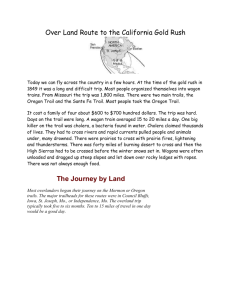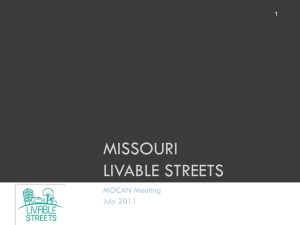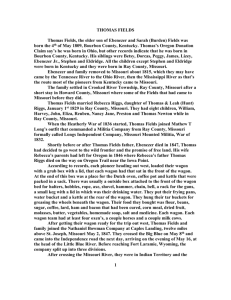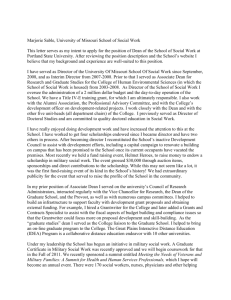Westward Expansion PowerPoint
advertisement
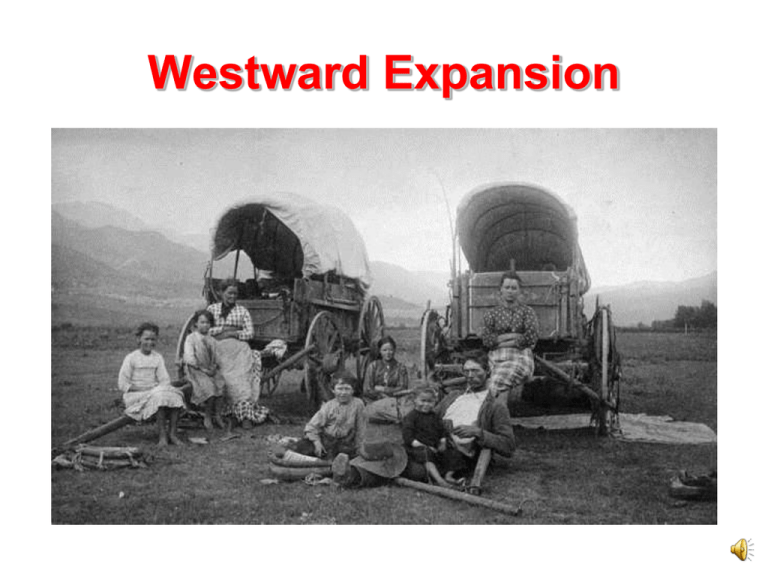
Westward Expansion Traveling Through Missouri Preparing for a long overland journey was a big job. Travelers needed basic food items such as flour, butter, sugar, salt, yeast, bacon, tea, and coffee. They needed enough supplies for a sixmonth journey. Traveling Through Missouri Settlers traveled in wagons drawn by four to six horses or oxen. They often joined with others to form a wagon train. These trains could include up to 100 wagons. They traveled together for safety. Traveling Through Missouri On a normal day, travelers would wake up at 4:00 a.m. The wagon train would journey until 4:00 p.m. Then the settlers made camp and cooked dinner. They also did chores, cared for their animals, and sang or played games until it was time to sleep. Hardships on the Trail The travelers faced many dangers and hardships. People brought along animals to stock their new farms or ranches. It was hard to control these herds. Many travelers suffered from injuries or disease. The weather could change suddenly. The travelers feared attacks by Native Americans. Jumping-Off Points Missouri soon became the “jumping-off place” for people going to the West. Our state was easy to reach because of its location on the Missouri and Mississippi Rivers. So many people stopped here that Missouri became known as the “Gateway to the West.” Easterners would take a steamboat on the Missouri River as far west as Franklin or Independence. Jumping-Off Points Pioneers would prepare for the overland part of the journey in a covered wagon. They bought their supplies in Franklin and Independence. In the trail towns, experienced wagon leaders made a living taking settlers west. Westward Trails The Santa Fe Trail was an 800-mile trail from Independence, Missouri to Santa Fe, in what is now New Mexico. Traders had used this route since 1821 to trade with Mexico. Travelers on the Oregon Trail and some of the California Trail also set off from Independence. hardship • A danger or difficulty people endure in the pursuit of a goal. Back to text


